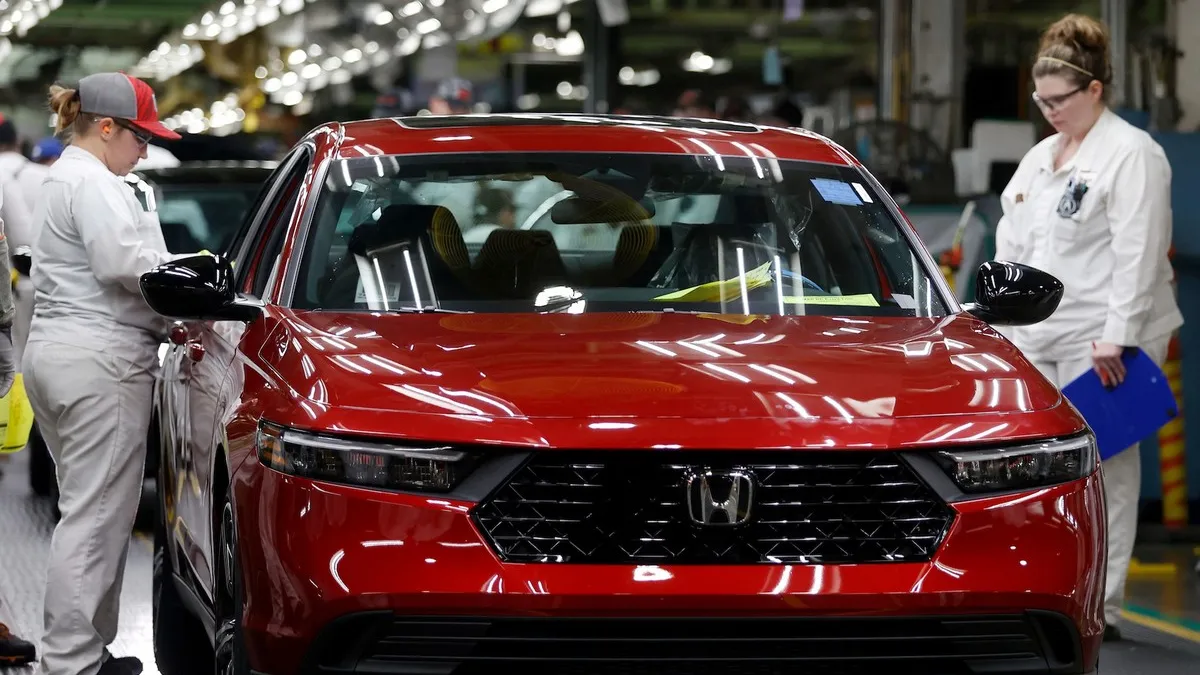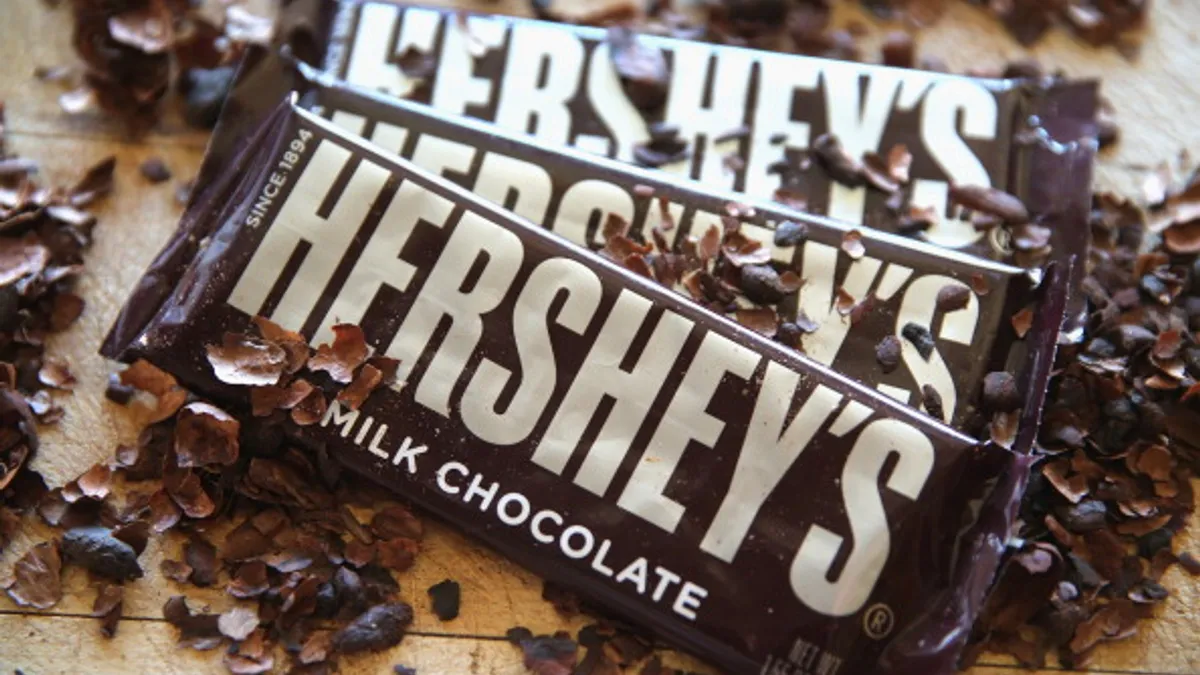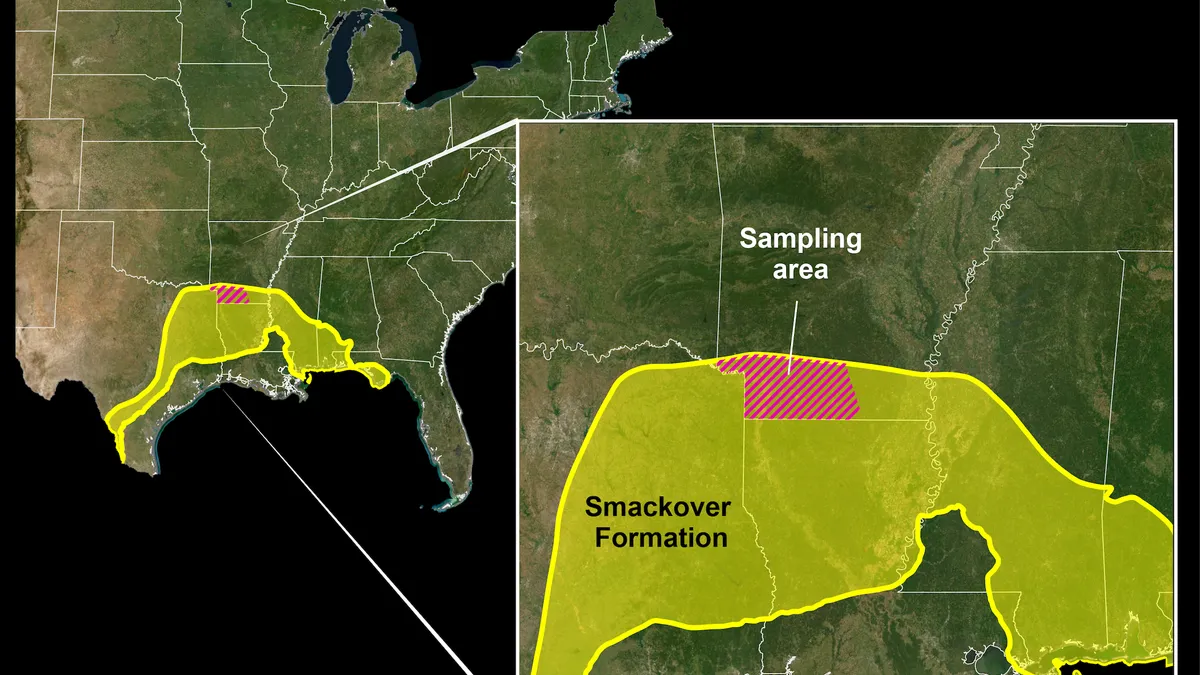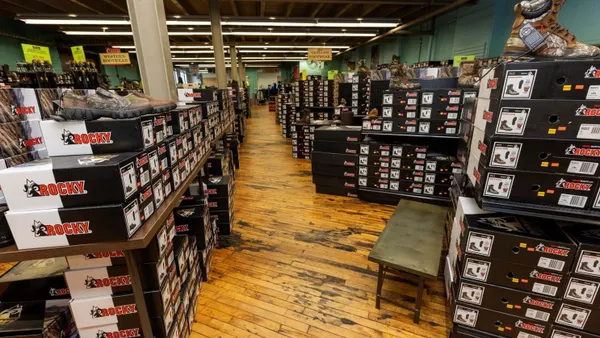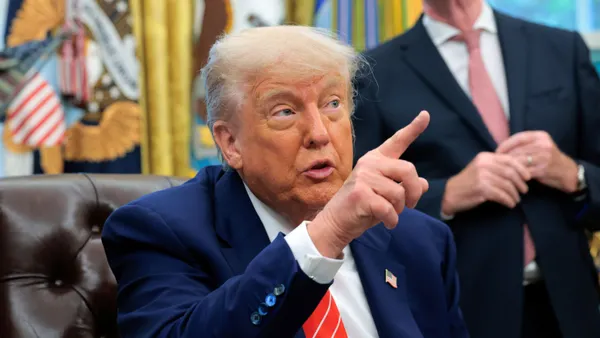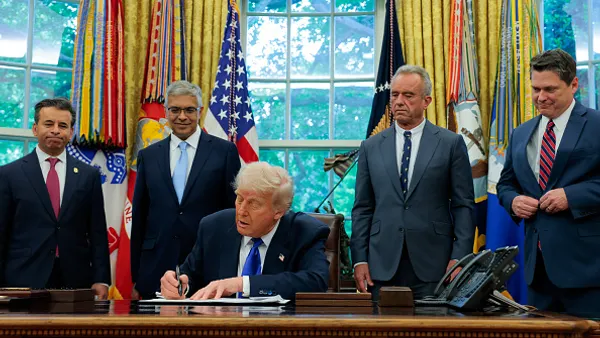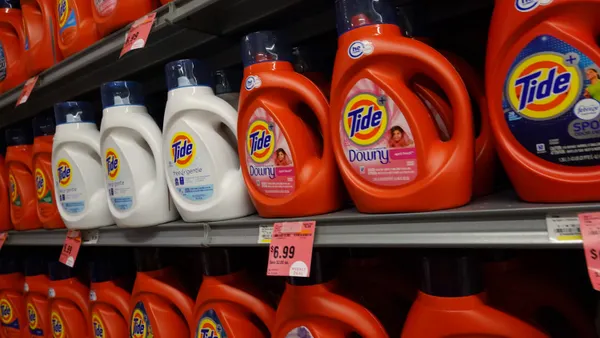Correction: An earlier version of this story used the wrong currency when discussing tariff impacts on Honda. The amount should be 20 billion yen, not U.S. dollars. The story has been updated.
Dive Brief:
- Honda Motor Co. said a 25% tariff on imports poised to take effect next month could have a 20 billion plus yen impact ($132.7 million) on the company, Global EVP Shinji Aoyama said on a call with analysts Feb. 13.
- But the automaker is weighing several options to mitigate the impacts ahead of any new tariffs, including shifting some vehicle production from Mexico and Canada to the U.S., executives said on the call. Similar moves are also being considered by General Motors and Nissan Motor Corp.
- However, as the situation is fluid, Aoyama said the automaker must be prepared to react. “In terms of the tariff increase, again, in the big picture, of course, every year, the situation is rather different,” he said.
Dive Insight:
Honda is one of many automakers that rely on Mexico for its automotive supply chain. The country is the largest export market for U.S. automotive parts and the fourth-largest producer of automotive parts worldwide, according to the International Trade Administration. Honda itself builds roughly 200,000 vehicles in Mexico annually, 80% of which are sold in the U.S.
Tariffs could be costly for Honda, Aoyama said. Roughly one-third or more of its businesses use overseas components shipped by air or imported from Canada and Mexico. The remaining two-thirds are produced in the U.S.
Among the short-term options being weighed by Honda is reorganizing its product mix and relocating production that’s currently outside of the U.S. Honda’s mid-term outlook includes changing these allocations in “different ways,” according to Aoyama. But the moves are still contingent on further action by the Trump administration.
“Of course, we have to watch carefully what's going on then decide when to start with that,” Honda CFO Eiji Fujimura said on the call.
Outside of possible tariffs on vehicle components and parts, the impact of higher duties on steel and aluminum may be minimal for Honda, as the automaker can turn to its broad supplier network, according to Aoyama.
“We have quite a bit of procurement within the country in the U.S.,” he said.
Ahead of potential new tariffs, Honda remains focused on the short-term to mid-term ramifications as the company begins to execute its long-term electrification strategy, which includes the production of electric vehicles at its new EV hub in Ohio.
The automaker is investing over $1 billion in three Ohio plants to produce internal combustion engine vehicles and fully electric models for the North America market. It also includes the domestic production of batteries.
Honda is also looking to reduce U.S. production costs and improve profitability further, including for hybrid vehicles, which may help it better withstand the impact of any tariffs on other products. As a result of cost-cutting initiatives, Honda expects its profit margins on its next-generation vehicles will improve from 2027 onward.
“We are going to improve the businesses of the upcoming models, and we will spend the development efforts with investment which will improve the situation furthermore,” said Aoyama. “It will improve the profitability of the entire business, including ICE cars and hybrids.”
Honda is uncertain how tariffs may impact its Canadian operations. In April 2024, Honda and its joint venture partners announced plans to invest up to CAD $15 billion ($11 billion) to build out an electric vehicle supply chain in Canada. The plans include an EV factory and building a new battery plant in Alliston, Ontario.
During Honda’s Q3 earnings call last November, Aoyama said that converting its Ohio sites for electrification was a long-term decision made to improve the automaker’s position in the North American market. He also views the company’s U.S. investments as flexible, allowing Honda to better adapt to market conditions, which now may include tariffs.
Honda is not the only automaker bracing for tariffs that could significantly increase supply chain costs. Last week, Ford Motor Co. CEO Jim Farley said that tariffs on vehicle components from Canada or Mexico “would be detrimental to the U.S. auto industry.”
General Motors CFO Paul Jacobson also expressed additional concerns about auto industry tariffs becoming permanent, and said that the company might need to consider its assembly plant locations to minimize tariff impacts.
But Honda could be more resilient to tariffs than other automakers, since roughly 60% of the parts used in vehicle production in the U.S. use local content, according to Aoyama. He said Honda vehicles have the second highest amount of local parts content behind Ford.
However, Fujimura said that the remaining 40% of Honda vehicles imported from Japan are supported by production in Mexico and Canada and could be more vulnerable to tariffs. But he added that Mexico and Canada are also dependent on the U.S., which highlights the interconnection between North America’s automotive supply chains.



